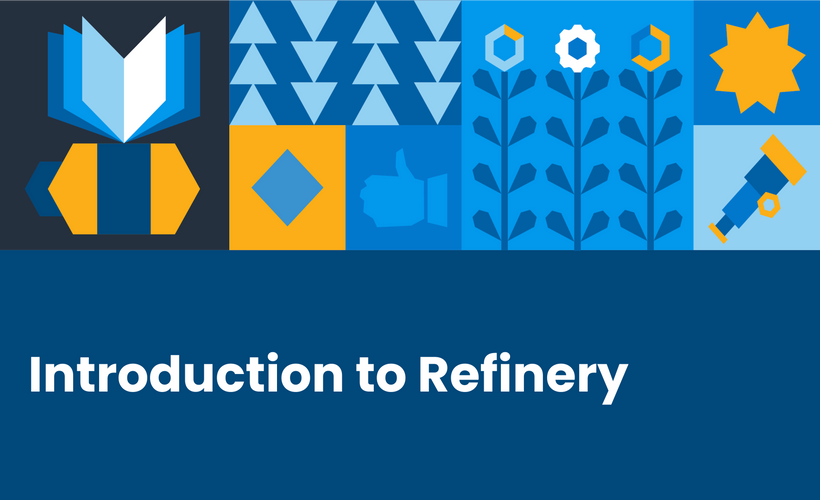
About the Course
What am I going to learn in this course?
Do you want to learn how to take control of the volume and quality of data your systems send to Honeycomb without losing critical observability? Maybe you're trying to manage costs while keeping the insights that matter most. Sampling can solve these challenges, but it has to be done right... and that’s where Refinery comes in!
Your observability data tells the story of what’s happening inside your systems. But to see that story in Honeycomb, the data has to be sampled intelligently and efficiently. Refinery is Honeycomb’s trace-aware sampling proxy that gives you full control over what data makes it into your Honeycomb environment, and how.
Refinery is the easiest and most powerful way to implement trace-based sampling with rules that you define. This course will teach you how to get started with Refinery, understand its configuration, and tune its sampling rules, so you can send smarter, more cost-effective data to Honeycomb, explore high-cardinality fields without losing signal, and make your telemetry pipeline more efficient and scalable.
How will I learn these things?
This course will teach you how Refinery works and how to configure and tune it through three types of learning activities:
Short videos that introduce you to sampling fundamentals, Refinery’s architecture, and how it processes and filters data. These provide critical conceptual understanding before diving into the hands-on work.
-
Guided hands-on activities using our sample application where you'll work with Docker Compose and Honeycomb to set up Refinery, generate and route sample data, and apply different rule configurations. These activities help you put theory into practice with real tooling.
Every activity has its own branch to show you what the final result should be. These are labeled accordingly!
Configuration walkthroughs that show you how to define sampling rules, use dynamic samplers, and optimize your setup for high-cardinality datasets. These help you adapt Refinery to real-world scenarios and data characteristics.
What do I need before taking this course to be successful?
Basic familiarity with tracing concepts and how data is visualized in Honeycomb
Access to a Honeycomb environment where you can run Refinery and explore the results
Install Docker: https://docs.docker.com/get-started/get-docker/
Comfort using Docker and YAML for configuring infrastructure
Basic familiarity with how telemetry sampling works. Still new to this? Take our Introduction to Sampling course!
Additional Resources
See the Honeycomb Refinery repository for more information.
Course Categories
Course Instructor
-
Get Started with Refinery
- Refinery Architecture
- How Refinery Processes Data
- Refinery Configuration and Rules Files
- Build a Telemetry Pipeline for Testing
- Set Up the Collector and Refinery
-
Tuning Refinery Rules
- Using Rules to Change How Data is Sampled
- Adding a Dynamic Sampler
- High Cardinality: Effects on Dynamic Samplers
- Fundamental Refinery Rules: Know Before You Go
-
Survey
- Tell us what you thought!
About the Course
What am I going to learn in this course?
Do you want to learn how to take control of the volume and quality of data your systems send to Honeycomb without losing critical observability? Maybe you're trying to manage costs while keeping the insights that matter most. Sampling can solve these challenges, but it has to be done right... and that’s where Refinery comes in!
Your observability data tells the story of what’s happening inside your systems. But to see that story in Honeycomb, the data has to be sampled intelligently and efficiently. Refinery is Honeycomb’s trace-aware sampling proxy that gives you full control over what data makes it into your Honeycomb environment, and how.
Refinery is the easiest and most powerful way to implement trace-based sampling with rules that you define. This course will teach you how to get started with Refinery, understand its configuration, and tune its sampling rules, so you can send smarter, more cost-effective data to Honeycomb, explore high-cardinality fields without losing signal, and make your telemetry pipeline more efficient and scalable.
How will I learn these things?
This course will teach you how Refinery works and how to configure and tune it through three types of learning activities:
Short videos that introduce you to sampling fundamentals, Refinery’s architecture, and how it processes and filters data. These provide critical conceptual understanding before diving into the hands-on work.
-
Guided hands-on activities using our sample application where you'll work with Docker Compose and Honeycomb to set up Refinery, generate and route sample data, and apply different rule configurations. These activities help you put theory into practice with real tooling.
Every activity has its own branch to show you what the final result should be. These are labeled accordingly!
Configuration walkthroughs that show you how to define sampling rules, use dynamic samplers, and optimize your setup for high-cardinality datasets. These help you adapt Refinery to real-world scenarios and data characteristics.
What do I need before taking this course to be successful?
Basic familiarity with tracing concepts and how data is visualized in Honeycomb
Access to a Honeycomb environment where you can run Refinery and explore the results
Install Docker: https://docs.docker.com/get-started/get-docker/
Comfort using Docker and YAML for configuring infrastructure
Basic familiarity with how telemetry sampling works. Still new to this? Take our Introduction to Sampling course!
Additional Resources
See the Honeycomb Refinery repository for more information.
-
Get Started with Refinery
- Refinery Architecture
- How Refinery Processes Data
- Refinery Configuration and Rules Files
- Build a Telemetry Pipeline for Testing
- Set Up the Collector and Refinery
-
Tuning Refinery Rules
- Using Rules to Change How Data is Sampled
- Adding a Dynamic Sampler
- High Cardinality: Effects on Dynamic Samplers
- Fundamental Refinery Rules: Know Before You Go
-
Survey
- Tell us what you thought!
